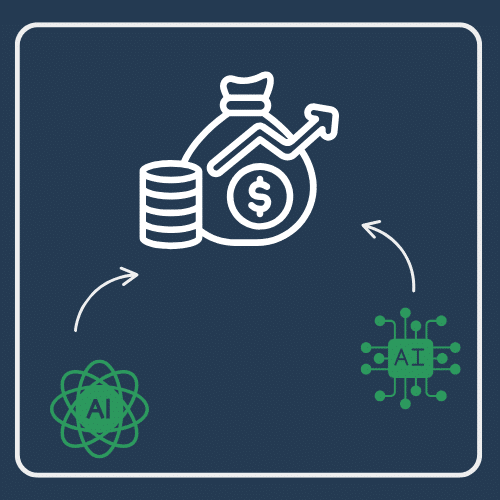SAP Financial Planning and Analytics
Discover our guide to the SAP Financial Management solution. An AI-powered solution for real-time planning, analysis, budgeting and forecasting.
You are here : Home " SAP Guide " SAP Solutions "SAP Financial Planning and Analytics
Financial management is no longer based on fixed Excel spreadsheets.
Today, the companies that excel are those able to model, simulate and anticipate their business scenarios in real time.
To support this digital transformation, SAP offers a new-generation cloud solution: SAP Financial Planning and Analytics (SAP FP&A).
A true strategic lever that integrates budget planning, financial consolidation, performance analysis, forecasting and artificial intelligence, at the service of financial services and management.
👉 If you manage FP&A processes, follow financial objectives or aim for a finance-oriented SAP consulting career, this guide is your starting point.
What is SAP Financial Planning and Analytics?
Imagine a medium-sized company.
Each department works with its own Excel templates.
Assumptions change from month to month.
Data sources are vague, instructions imprecise.
As a result, planning becomes a political exercise, not a structured process of transformation or analysis.
SAP FP&A breaks this pattern.
A complete solution for financial planning and analysis
SAP FP&A is an integrated cloud platform designed to centralize budgeting, financial modeling, simulation, consolidation and performance analysis processes.
It offers finance and FP&A departments the ability to :
- Collaborate on a shared data model,
- Accelerate planning cycles,
- Simulate scenarios based on different assumptions,
- Make decisions based on reliable, up-to-date financial information.
Every piece of data is a reliable source. Every assumption is anchored in a model. Every simulation reflects a realistic scenario.
Native integration with SAP S/4HANA and SAP Analytics Cloud
SAP FP&A relies on two key technology building blocks:
- SAP S/4HANAto consolidate operational data,
- SAP Analytics Cloud (SAC)for cloud planning, dynamic visualization and predictive analysis.
This combination guarantees total consistency between transactional data and strategic analyses, without reprocessing or double entry.
Result:
Users have access to a single source of truth throughout the organization.
Forecasts are aligned with actual operations.
Decisions are based on consolidated information.
SAP FP&A is transforming the way companies plan for the future.
And to understand what this means in concrete terms, we need to look at the three functional pillars of the solution.
The pillars of SAP Financial Planning and Analytics
SAP FP&A structures performance management around three essential functional pillars:
Financial Planning (FP&A)
It's the driving force behind your strategy.
You define your objectives, draw up budgets and adjust your plans according to realities in the field and forecasts.
You work with the business units to ensure full strategic alignment.
- Budgets by entity, department or product
- Continuously updated sliding scenarios
- Transformation from an annual approach to agile management
Objective: Monitor financial performance within an adaptive framework.
Financial Analytics
All plans are based on... assumptions.
Financial Analytics lets you test, measure and compare them.
You have clear dashboards, connected to real data, filterable by any dimension: product, country, business unit...
It's a guarantee that we won't be fighting the wrong war.
Prediction and AI
The final stage of the SAP FP&A rocket is AI.
Thanks to integrated predictive models, you can :
- Identify emerging trends,
- Generate forecasts from historical data,
- Receive automated budget adjustments.
This isn't science fiction.
We save a massive amount of time, and improve the reliability of our forecasts.
These three pillars rest on one thing: a solid, integrated functional base.
Key features of SAP FP&A
What sets SAP Financial Planning and Analytics apart is not just its cutting-edge technology, but the way in which each feature meets concrete business needs.
Each option is designed to transform financial management into a fluid, collaborative and performance-oriented process.
🧾 Collaborative budget planning
Gone are the days of Excel files exchanged by e-mail and cobbled-together PowerPoint presentations.
With SAP FP&A, the budgeting process becomes structured, cloud-native and secure:
- Managers enter their assumptions directly into a unified model,
- Data is consolidated automatically, without manual reprocessing,
- Differences are visible in real time on intelligent dashboards.
The result: a reliable budget, aligned with operations and strategic objectives.
🔄 Simulation of financial scenarios
"What if logistics doubled?"
"What if demand falls by 10 % next year?"
"What would be the impact of a new pricing model?"
SAP FP&A lets you create, compare and adjust what-if scenarios in just a few clicks.
Visualize the effect of your assumptions on :
- Consolidated income statement
- Cash flow
- The indicators of financial performance
This is no longer isolated forecasting, but continuous strategic simulation.
📐 Multidimensional analysis and drill-down
A good financial analysis relies on the ability to explore data in all its useful dimensions.
With SAP FP&A, you can :
- Filter by entity, region, year, product or customer
- Consolidate multi-currency or multi-country data
- Dig down each indicator to the original transaction (drill-down)
You'll get a clear, coherent reading that can be used at every level of decision-making.
📈 Real-time financial reporting
Gone are the days of static, "month-end" reporting.
SAP FP&A is based on SAP Analytics Cloud, offering :
- Interactive dashboards, adapted to each hierarchical level
- Reports to local and international standards
- Continuous data updating thanks to integration with SAP S/4HANA
Reporting becomes a real-time management tool, at the heart of the decision-making process.is.
These key services are not incidental.
They embody the added value of SAP FP&A for any company wishing to professionalize its financial transformation.
But to choose the right solution, you also need to be aware of its limitations.
The pros and cons of SAP FP&A
As with any Financial Planning & Analysis solution, SAP FP&A has major advantages, but there are also constraints to be aware of before implementation.
The aim here is to provide a clear, unfiltered view of marketing, based on customer experience and feedback from the field.
SAP FP&A is a robust, strategic solution designed to help companies transform their performance management.
But it requires a clear commitment, well-trained resources, and focused implementation to reveal its full power.
And just who are the companies that have a real interest in using this tool?
Who is this solution designed for?
SAP Financial Planning and Analytics (FP&A) is not a plug-and-play application to be "tested one afternoon".
It's a strategic solution, designed to support large-scale, sustainable transformation of financial management.
Here are the profiles and structures for which this platform makes the most sense.
Large companies and multi-entity groups
When an organization has several subsidiaries, complex legal models, sites in several countries or different accounting rules, planning becomes a real challenge in terms of consolidation and standardization.
SAP FP&A is designed to handle this complexity:
- Automated inter-company consolidation,
- Multiple currency management,
- Group-wide harmonization of FP&A processes.
Objective: structure processes, make data more reliable, align entities around a common vision.


Demanding finance departments
In mature structures, the finance function is no longer limited to producing reports.
It must become a strategic partner able to steer the company's transformation.
SAP FP&A enables :
- From data collection todecision analysis,
- Make every financial assumption modelable,
- Integrate advanced technologies (AI, prediction, automation).
The CFO gains in visibility, credibility and influence.
Fast-growing companies
When the number of employees, BUs or products multiplies, traditional tools quickly show their limits.
- Visit Excel templates become unmanageable,
- Budget approvals are lost,
- Data is fragmented and untraceable.
With SAP FP&A, you :
- Industrialize budgeting process,
- Simulate different expansion or contraction scenarios,
- Give your customers a clear financial vision investors and partners.
An ideal solution for structuring growth while maintaining agility.


SAP consultants or profiles undergoing retraining
On the career front, FP&A is a employability lever major.
Companies are looking for profiles capable of :
- Set up and implement the solution in a complex context,
- Optimize planning and simulation models,
- Supporting upgrading user skills.
Training on SAP FP&A gives you access to :
If you are a structured, growing or transforming company,
or a finance or digital professional aiming for a high-value specialization :
SAP FP&A deserves your attention.
In the next section, we'll look at how to use it effectively, without getting lost in the options.
How do I use SAP FP&A?
With SAP Financial Planning and Analytics, you lay the foundations for modern management.
But to transform this infrastructure into a performance driver, a structured approach is required.
Here are the key steps for getting the most out of the solution, whether you're an end-user or a future SAP FP&A consultant.
🛠️ Model your organization
First and foremost, you need to structure your business model in the system:
- Cost and profit centers
- Hierarchies: entities, business units, regions
- Analytical dimensions: products, customers, projects, services...
SAP FP&A helps you formalize your processes and clarify your management structure.
This is the prerequisite for rigorous, consistent management.
📤 Connect your data sources
The quality of your FP&A depends on the seamless connection of information sources:
- ERP: SAP S/4HANA or other
- CRM, HR tools, external databases
- Excel files (temporarily)
SAP FP&A integrates these flows into a unified cloud model, guaranteeing the reliability and traceability of the data used.
📅 Start planning cycles
Once the model is ready :
- Define overall financial objectives
- Open up planning to local managers
- Activate validation workflows
Every contribution is recorded, every version documented.
You enter into a collaborative management process.
🧪 Simulate scenarios
One of FP&A's greatest assets: scenario simulation.
Create multiple hypotheses:
- Optimistic scenario (rapid growth)
- Realistic scenario (base budget)
- Cautious scenario (crisis, inflation, rising costs)
Compare the impact on your key indicators: EBITDA, cash flow, financing requirements, etc.
📊 Monitor, analyze, adjust
The work doesn't stop once the budget has been approved.
With SAP FP&A, you can :
- Compare actual with forecast
- Analyze variances in detail
- Recommend ongoing adjustments
It is this continuous improvement loop that enables proactive performance management.
Using SAP FP&A is not about "filling a tool".
It means setting up an integrated management system, aligned with your financial objectives, your operations and your global strategy.
And now, let's see how SAP FP&A stacks up against the competition.
SAP FP&A vs. other market solutions
The market for Financial Planning & Analysis (FP&A) solutions is vast and competitive.
Between Anaplan, Oracle Hyperion, Workday Adaptive Planning or the Excel + Power BI tandem, each platform has its strengths.
So why choose SAP FP&A?
And when is it the best strategic option for your business or career?
1. Native integration with ERP system
This is the decisive advantage of SAP FP&A.
The solution is designed to work seamlessly with :
- SAP S/4HANA for real-time operational data feeds
- SAP Analytics Cloud for planning, analysis and visualization
- SAP SuccessFactors to integrate HR dimensions into forecasts
Result:
No re-keying. No reprocessing.
A single source of truth, synchronized with the enterprise management system.
2. Functional richness vs. accessibility
Some competing solutions claim to be "simpler" to use.
But this simplicity comes at the price of flexibility.
- Anaplan very powerful for complex scenarios, but requires dedicated technical expertise.
- Oracle Hyperion sturdy but often perceived as heavy and aging.
- Power BI + Excel A well-known, cost-effective solution, but limited in terms of collaboration, consolidation and workflow management.
SAP FP&A offers a good balance:
🔁 Powerful enough to handle complex scenarios
📊 Modern enough to be used in cloud collaboration mode
🔐 Sufficiently structured to meet compliance requirements
3. Scalability & durability
SAP is investing heavily in automation, artificial intelligence and cloud transformation.
FP&A is in line with this logic: a scalable platform, designed to support companies over several years, rather than as a temporary patch.
The tool tracks your growth, anticipates your needs and integrates with your other digital services.
In a nutshell:
| Criteria | SAP FP&A | Anaplan | Oracle Hyperion | Power BI + Excel |
|---|---|---|---|---|
| SAP integration | ⭐⭐⭐⭐⭐ | ⭐⭐ | ⭐ | ❌ |
| Complex scenarios | ⭐⭐⭐⭐ | ⭐⭐⭐⭐⭐ | ⭐⭐⭐ | ⭐ |
| Cloud collaboration | ⭐⭐⭐⭐ | ⭐⭐⭐ | ⭐ | ⭐ |
| Cost of entry | ⭐⭐ | ⭐⭐ | ⭐ | ⭐⭐⭐⭐ |
| Learning curve | ⭐⭐ | ⭐ | ⭐ | ⭐⭐⭐⭐ |
SAP FP&A is not "the best tool" in absolute terms.
But for companies already in the SAP ecosystem, or those looking for a robust, scalable solution, it's clearly one of the most strategic choices.
SAP FP&A is more than just planning software.
It's a strategic lever for transforming financial management into a real driver of performance.
But like any powerful lever, it only delivers results if you know how to activate it.
And it starts with training.
PS: Would you like to get to grips with SAP's new solutions and master the tools of the future?
At Expert Training Center, we train you in the technologies that count:
SAP expertise training

👤 Who is this training for? Designed for SAP consultants with previous experience who want to deepen their expertise and move into higher value-added positions.
🎯 What is the purpose of this training? Our aim is to enable you to rapidly upgrade your skills and keep up to date with the latest developments in the field. Combining cutting-edge content, application and personalized follow-up.
🚀 What learning method do you use? Platform integrating training content created by our network of SAP experts, an SAP AI agent, personalized Learning Paths, and support from a community of experts.

